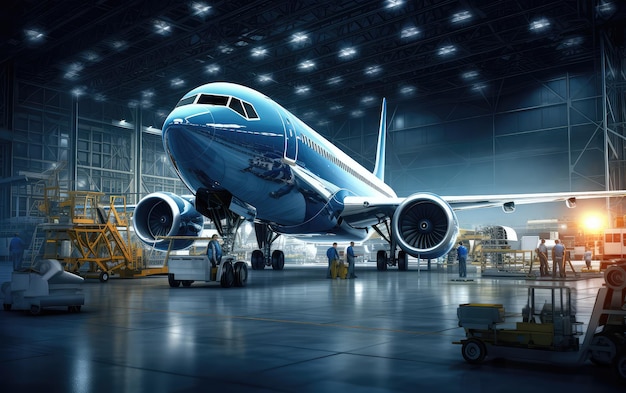In the world of aviation, staying ahead of the curve is essential. Avionics trends and innovations are pivotal to the evolution of the aerospace industry. As we look towards the future, understanding these trends is crucial for exporters and importers who play a significant role in this domain.

The Importance of Avionics in Modern Aviation
Avionics, short for ‘aviation electronics,’ is the backbone of modern aircraft. It encompasses the electronic systems used for communication, navigation, and the management of multiple onboard systems. These technologies are integral to the safety and efficiency of air travel.
Key Components of Avionics
Avionics systems include communication systems, navigation systems, display systems, and management systems. Each component plays a vital role in ensuring the aircraft operates smoothly and safely.
Communication Systems
Communication systems facilitate the exchange of information between the cockpit and air traffic control. These systems ensure that pilots can receive real-time updates and instructions, which is essential for safe flight operations.
Navigation Systems
Navigation systems guide the aircraft along its flight path. With advancements in GPS technology, navigation systems have become more precise, reducing the chances of error and increasing overall flight safety.
Recent Innovations in Avionics
Recent years have seen remarkable innovations in avionics. From enhanced display systems to advanced data analytics, these innovations are transforming how aircraft operate.
Enhanced Display Systems
Modern aircraft are equipped with sophisticated display systems that provide pilots with vital information at a glance. These systems enhance situational awareness, allowing pilots to make informed decisions quickly.
Data Analytics
Data analytics is playing an increasingly important role in aviation. By analyzing large datasets, airlines can optimize flight paths, reduce fuel consumption, and enhance safety measures. This technology is revolutionizing the way airlines operate.
The Role of Automation in Avionics
Automation is another trend that is shaping the future of avionics. Automated systems are being integrated into aircraft to enhance efficiency and safety.
Autopilot Systems
Autopilot systems have been around for decades, but recent advancements have made them more sophisticated. Modern autopilot systems can handle complex flight maneuvers, reducing the workload on pilots.
Predictive Maintenance
Predictive maintenance uses data analytics to anticipate when an aircraft component might fail. This technology allows airlines to perform maintenance before a failure occurs, reducing downtime and enhancing safety.
The Impact of Connectivity on Avionics
Connectivity is transforming the aviation industry. With the advent of high-speed internet on aircraft, a new era of connected aviation is emerging.
In-flight Connectivity
In-flight connectivity allows passengers to stay connected during their flights. This technology is enhancing the passenger experience and providing airlines with new revenue streams.
Connected Aircraft
Connected aircraft are those that can communicate with ground systems in real-time. This capability allows for real-time monitoring of aircraft systems, enhancing safety and efficiency.
Challenges Facing Avionics Innovations
While the benefits of avionics innovations are clear, there are also challenges that need to be addressed. These include cybersecurity risks, regulatory hurdles, and the need for skilled personnel.
Cybersecurity Risks
As aircraft become more connected, they are also more vulnerable to cyberattacks. Ensuring the security of avionics systems is crucial to protecting both passengers and crew.
Regulatory Hurdles
The aviation industry is heavily regulated, and introducing new technologies can be a slow process. Navigating these regulatory hurdles is essential for the successful implementation of avionics innovations.
Future Trends in Avionics
Looking to the future, several trends are likely to shape the avionics industry. These include the integration of artificial intelligence, the development of electric aircraft, and the use of augmented reality.
Artificial Intelligence
Artificial intelligence is set to revolutionize avionics. From enhancing autopilot systems to improving maintenance procedures, AI has the potential to transform the aviation industry.
Electric Aircraft
The development of electric aircraft is another exciting trend. These aircraft promise to reduce carbon emissions and operating costs, making them an attractive option for airlines.
Augmented Reality
Augmented reality (AR) is being explored as a tool for enhancing pilot training and improving situational awareness. AR can provide pilots with additional information about their surroundings, enhancing safety.
Conclusion
In conclusion, avionics trends and innovations are shaping the future of aviation. From enhancing safety and efficiency to transforming the passenger experience, these technologies are revolutionizing the industry. As we look to the future, staying informed about these trends will be crucial for all stakeholders in the aviation sector.

FAQs
What are the latest trends in avionics?
The latest trends in avionics include enhanced display systems, data analytics, automation, and connectivity. These technologies are revolutionizing the way aircraft operate.
How is artificial intelligence being used in avionics?
Artificial intelligence is being used to enhance autopilot systems, improve maintenance procedures, and optimize flight paths. AI has the potential to transform the aviation industry.
What are the challenges facing avionics innovations?
The challenges facing avionics innovations include cybersecurity risks, regulatory hurdles, and the need for skilled personnel. Addressing these challenges is crucial for the successful implementation of new technologies.
For more insights on avionics and its role in modern aviation, you can visit this external resource.
Read more about avionics software or explore data logging systems in aerospace.


